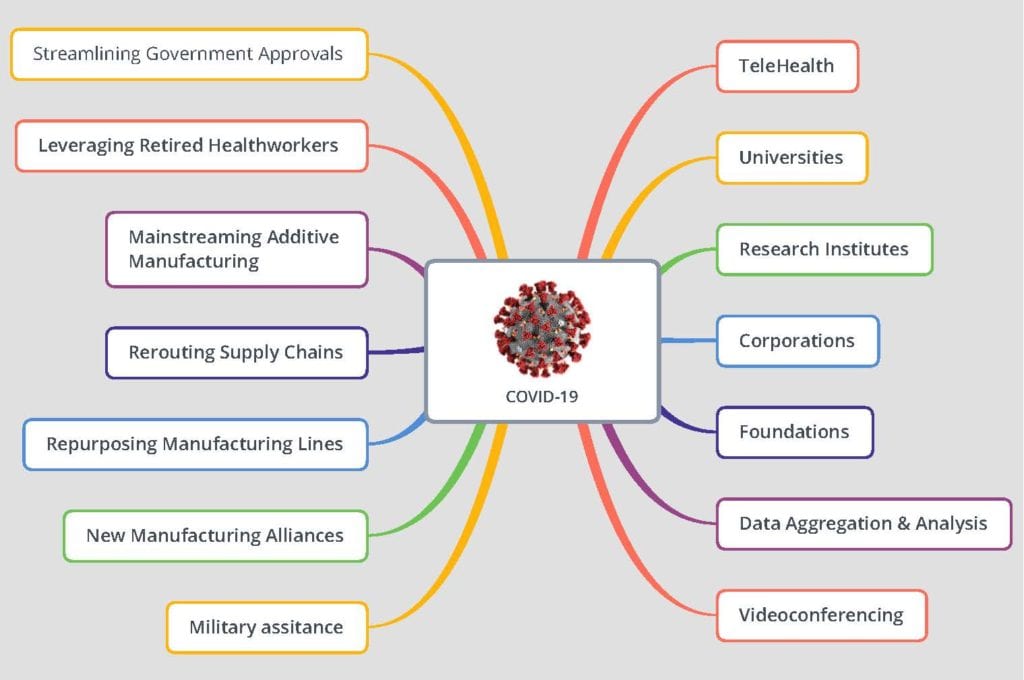By Victoria Scarborough, Ph.D., The ChemQuest Group
We live in unprecedented times. Global populations and thriving world economies have been ravaged by an unseen enemy—the novel coronavirus SARS-CoV-2, COVID-19. Easy viral transmission and high infection rates have caused a world-wide pandemic resulting in dramatic changes to our daily rituals. The result? A global call to mobilize our know-how and capabilities to beat back a deadly virus that sees no borders and can infect us all. As innovators and scientists, we like to think outside the box to solve difficult problems. However, in this case, there is no box. We are all caught in a knowledge gap. What is this novel virus and how can we best defend ourselves from it? Like never before, there is collective focus on a single problem as we learn on the fly and improvise the solutions we need to stay healthy.
Massive mobilization has resulted in many types of approaches to accelerate the supply of personal protective equipment, hand sanitizer, data gathering methods, and even healthcare staff. Governments are streamlining approval processes to bring new treatments to market. Beverage companies, correctional facilities, paint manufacturers, and chemical companies are making hand sanitizer. Automotive companies are repurposing manufacturing lines to make ventilators. The military is standing up hospitals in empty convention centers within a week to increase bed capacity.

Our supply chains have been overrun with demand or shutdown, so we are sewing facial masks at home, and 3D printing companies are mass producing new types of face shields. Researchers from universities, corporations, research institutes, and foundations that are usually siloed, are setting aside publication rights and personal gain to share information and collaborate.
Rapid communication has turned out to be our best friend in these times. Now more than ever, effective communication via videoconferencing, email, social media, and virtual events has enabled us to work together faster. None of these collaborative efforts could have happened without it. Rapid communication has enabled sustained cooperation and a coordinated response even though we are not physically together. So what lessons can be learned from this experience that could drive future innovation?
Try creating new business models that were unlikely before COVID-19. Today, relationships of trust are quickly formed because of an urgent common goal. In the future, can you collaborate with outside organizations to solve a difficult industry problem that can benefit you both? Can you jumpstart this practice using highly efficient and cost-saving online virtual meeting tools, instead of relying on in-person discussions, whether for R&D or supply chain issues? There are difficult times ahead, but if we maintain a mindset of cooperation, we will find that the crisis brought out the best in each of us. Open communication and collaboration can help all businesses evolve and re-energize as we enter the era of surviving COVID-19. Hopefully, we will learn to thrive despite facing many hardships.
CoatingsTech | Vol. 17, No. 6 | June 2020
